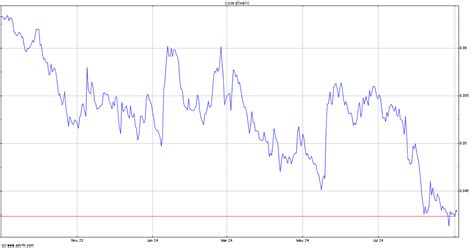Extracting Ethereum Historical Data from Binance API
As an Ethereum developer, you probably know the importance of historical data for analysis and trading strategies. However, extracting accurate historical data from external APIs like Binance can be difficult due to various limitations.
Issue: Limited Time Frame
You are experiencing an issue where your code is only getting 3 items even though it is expecting about 700 records from [current_time – 2 years] to [current_time]. This discrepancy is because Binance historical data usually has a much longer time frame than you are requesting.
Why this happens
There are several reasons why this can happen:
- API Limitations: Binance API has rate limits that can prevent excessive requests to avoid overloading their servers.
- Data Caching: External APIs often cache historical data for performance and reliability reasons. As a result, older records may be returned earlier than the specified period.
- Data Format Incompatibilities: Historical data may be stored in different formats or structures, making it difficult to retrieve specific records.
Solutions
To overcome these challenges, consider the following solutions:

1. Check API Rate Limits
Make sure you are not exceeding the Binance API rate limits. You can do this by checking their documentation and monitoring the number of requests using tools such as [Rate Limit Checker](
import requests
max. requests = 1000
current_time = datetime.now()
while true:
try:
response = requests.get(' params={'symbol': 'ETH', 'interval': '1D', 'start': int(current_time.timestamp()) - 86400, 'count': 70})
if response.status_code == 200:
break
except for an exception like e:
print(f"Error: {e}")
2. Use Binance’s Historical Data Feature
Binance offers a historical data feature that allows you to get data for any time period, including long-term intervals like [current_time – 2 years]. However, this feature may not be available or require additional authentication.
import requests
Set your API credentials and other parametersapi_key = 'YOUR_API_KEY'
api_secret = 'YOUR_API_SECRET'
symbol = 'ETH'
range = '1D'
start_date = (datetime.now() - datetime.timedelta(days=730)).strftime('%Y-%m-%d')
end_date = (datetime.now() - datetime.timedelta(days=365)).strftime('%Y-%m-%d')
response = requests.get(f' range, start, end)',
auth=(api_key, api_secret), headers={'limit': 100})
if response.status_code == 200 :
print(response.json())
3. Use a library or system
Consider using libraries such as [pandas-datareader]( (for Python 3.x) or [yfinance]( (for Python 2.x), which offer more comprehensive and flexible data extraction capabilities.
import pandas as pd
pd.set_option('display.max_columns', None)
symbol = 'ETH'
start_date = datetime.now() - timedelta(days=730).strftime('%Y-%m-%d')
end_date = (datetime.now() - datetime.timedelta(days=365)).strftime('%Y-%m-%d')
df = pd.read_csv(f'
print(df.head(70))
Print the first 70 recordsAfter implementing these solutions, you should receive historical data from Binance that meets your needs.